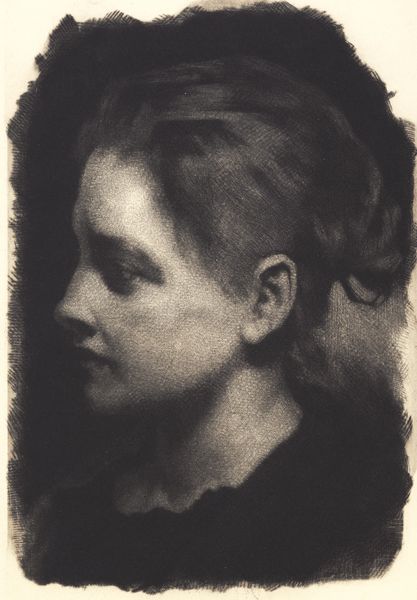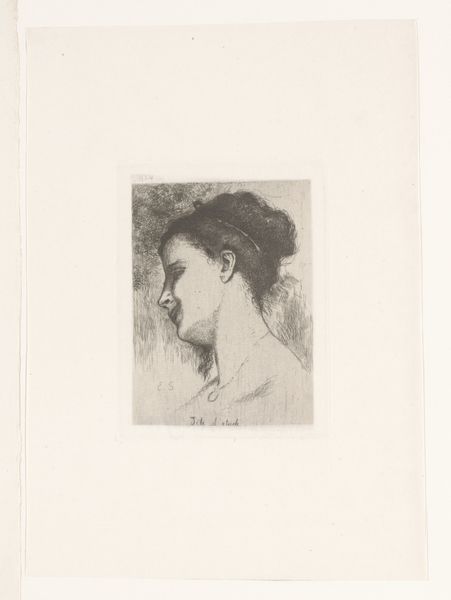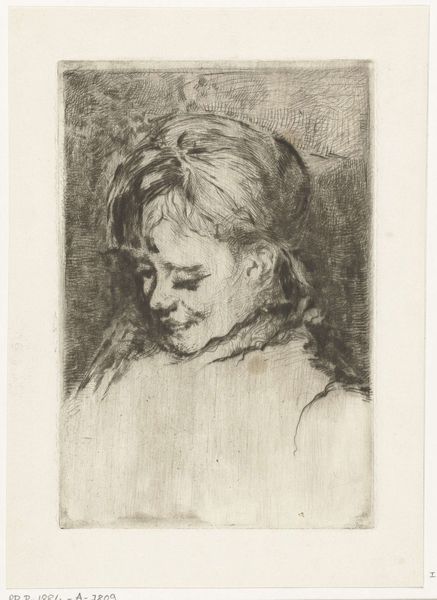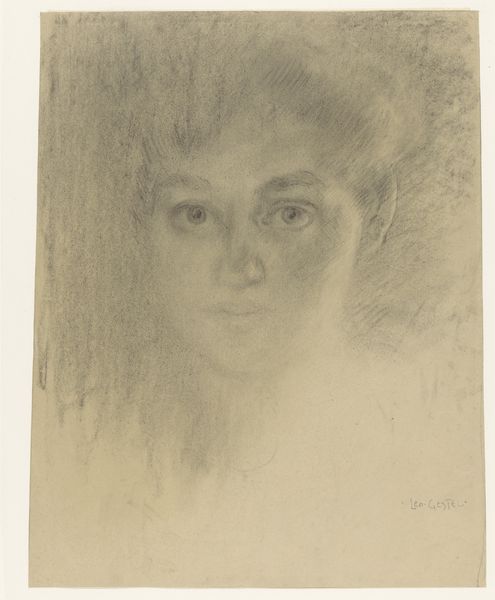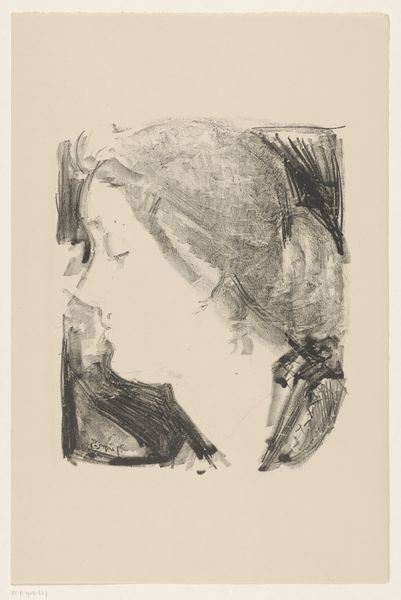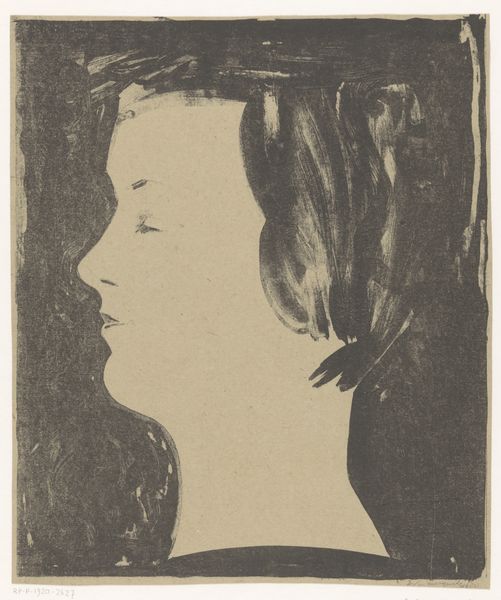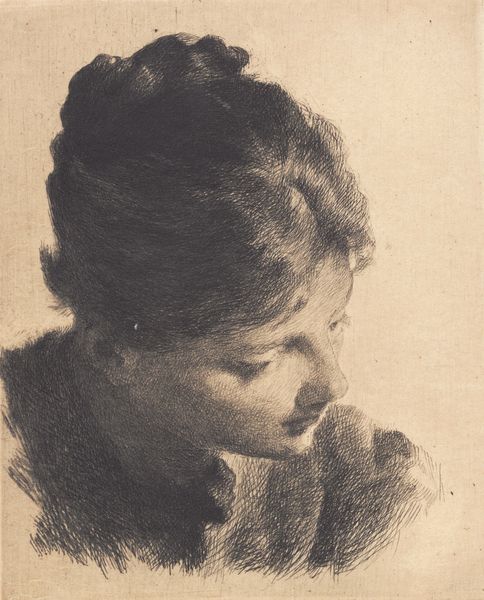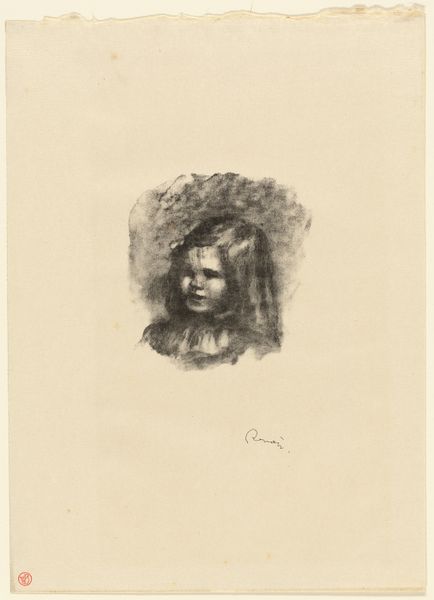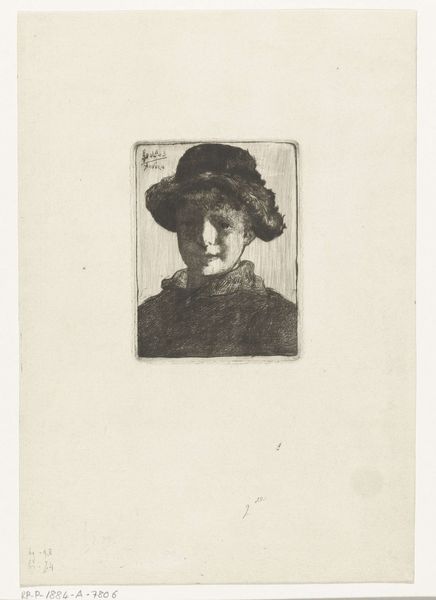
drawing, print, etching, pencil, charcoal
#
portrait
#
pencil drawn
#
drawing
# print
#
etching
#
charcoal drawing
#
pencil drawing
#
pencil
#
charcoal
#
academic-art
#
realism
Dimensions: 295 mm (height) x 195 mm (width) (plademaal)
Editor: This is "Young Girl in Profile with Pulled-Back Hair" by Frans Schwartz, created in 1899. It looks like it’s a print, maybe an etching, and it has a quiet, almost melancholic feel. What strikes me is how the artist achieved such detail with what appear to be relatively simple materials. What can you tell me about this piece? Curator: Look at the surface, at the labor evident in the etched lines. Each one a deliberate action. Schwartz isn't just representing a girl; he's engaging with the *process* of representation. How does the choice of etching—a reproducible medium—affect the perception of the subject? Editor: That's interesting. Does the fact that it’s a print, therefore reproducible, change how we should interpret it? Curator: Precisely. Consider the economics of art production at the time. Prints allowed wider distribution, a democratization of images. Was Schwartz trying to reach a different audience than traditional portrait painters? What social strata is being depicted here, and how does the medium influence our understanding of that? Think about the role of the art market itself and the work that exists within. Editor: So you're saying that it's not just about the girl in the image, but also about the social context of creating and distributing art at that time? Curator: Absolutely. And consider the materials themselves. The copper plate, the acid, the paper – each carries its own history of extraction, manufacture, and exchange. These elements inform the artwork just as much as the subject's likeness. What labor went into its production? Editor: That's really opened my eyes. I was focusing on the portrait itself, but now I see how the materials and method used contribute to the work's meaning and reach. It adds layers of complexity that I hadn't considered. Curator: Exactly! It’s not just about *what* is depicted, but *how* and *why*.
Comments
No comments
Be the first to comment and join the conversation on the ultimate creative platform.
